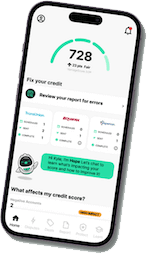What You Should Compare When Selecting Loans

Choosing the right loan isn’t just about chasing the lowest interest rate—it’s about understanding the full picture. From loan terms to lender reputation and hidden fees, this guide breaks down the 20 most important factors to consider before you borrow. Whether you’re eyeing a personal loan, mortgage, or debt consolidation, learn how to compare loan offers smartly and avoid costly mistakes. Plus, discover how tools like Dovly AI can help you improve your credit and unlock better loan options.
When it comes to borrowing money—whether for a car, a home, a dream vacation, or consolidating debt—selecting the right lender can be stressful. You may find yourself wondering: What should I compare when selecting a loan?
With countless offers from banks, credit unions, and online lenders, it’s easy to feel overwhelmed. But the truth is, not all loans are created equal—and choosing the wrong one can cost you far more than you expect.
This guide will walk you through the 20 most important factors to consider when comparing loans, so you can make informed decisions, save money, and find the best loan for your needs.
20 Factors to consider
Here’s the truth: not all loans are created equal. So really, what should you compare when selecting loans? More than just the variable or fixed interest rate! You need to dig deeper to understand the true cost of the loan and how it fits into your financial situation.
1. Loan Type
Different types of loans—personal loans, student loans, auto loans, or mortgage loans—serve different purposes. A personal loan is incredibly versatile and often unsecured, meaning you don’t need to provide collateral. Personal loan offers, for example, can be used for various expenses, including debt consolidation, medical bills, or large purchases, while a secured loan like a mortgage is tied to property. Always match the right loan to your need.
2. Loan Amount
Think carefully about how much money you need. The loan amount should cover your expenses without adding unnecessary debt. Borrowing less money than you need can cause issues down the line, while borrowing too much increases your cost of the total loan.
3. Interest Rate
Both the interest rate and the annual percentage rate (APR) are essential to review. Interest costs can vary widely between lenders. Fixed interest rates remain the same, while variable ones fluctuate. When comparing loans, always consider how much interest you’ll pay in total.
4. APR (Annual Percentage Rate)
APR includes the interest rate and any added fees. It’s the best metric to understand the total cost of the loan per year. APR helps you compare the rates from multiple lenders and figure out the best deal. When reviewing a personal loan, always compare APRs to understand the real value.
5. Loan Term
The loan term—typically between two to seven years—affects both your monthly payment and how much interest you’ll pay. A longer term may offer lower monthly payments but increase the cost due to interest. For personal loans, shorter terms often mean you pay less overall interest.
6. Monthly Payment
Your monthly payment must fit within your monthly budget. Calculate your expected loan payment based on interest rate, loan amount, and term. Lower monthly payments may sound appealing, but they often mean you’ll pay more interest in the long run. With a personal loan, striking the right balance between affordability and interest savings is key.
7. Fees and Charges
Upfront fees like application charges, loan fees, and origination fees can add up. Although they are often disclosed, closing costs can impact your loan too. These additional costs affect your total loan amount and APR. Always ask for a breakdown of any added fees. Many personal loan lenders offer fee transparency as a selling point—use that to your advantage.
8. Prepayment Penalties
Some loans penalize you for paying off your balance early. These prepayment penalties are other costs that sneak up on borrowers. Make sure you’re not punished for trying to save. If you’re considering a personal loan, find one that lets you prepay without fees.
9. Repayment Flexibility
Choose loans with flexible repayment terms. Some lenders allow payment deferrals or changes to due dates—especially helpful if your financial situation changes or if you’re consolidating existing debts. Many personal loan providers cater to borrowers seeking custom terms.
10. Lender Reputation
The best offer typically comes from a lender you can trust. Check reviews and ratings, and compare customer experiences. Look for lender offers that come from institutions with a solid reputation and transparent terms. Personal loan providers often have online reviews that highlight customer satisfaction.
11. Application Process
A smooth application process is a huge plus. Many lenders now offer instant prequalification with no hit to your credit score. Make sure you have details like your monthly income, bank account, and credit score ready. Applying for a personal loan online is often fast and user-friendly.
12. Approval Time
Need money fast? Approval times vary. While some lenders offer same-day funding, others might take a week. If you’re borrowing money for an emergency, this can make or break your choice. Personal loan applications are often processed quickly, making them ideal for urgent needs.
13. Credit Score Requirements
Your credit score plays a big role in the loan offers you receive. Good credit means lower interest rates and better terms. If you have bad credit, unsecured loans may be harder to qualify for—or come with higher interest rates. Most personal loans are unsecured, so your credit health matters even more.
14. Collateral Requirements
Secured loans require collateral like a home or car. Unsecured loans don’t—but may have higher rates. Compare loan options carefully based on your assets and risk tolerance. A personal loan is typically unsecured, offering more flexibility but requiring solid creditworthiness.
15. Income Verification
Be prepared to show documentation of your monthly income. Lenders want to ensure you can handle your monthly payment. Some lenders are more lenient than others when verifying income. This step is especially crucial in a personal loan application process.
16. Debt-to-Income Ratio
This ratio is a key metric for lenders. It compares your monthly debt obligations to your income. A lower ratio means you can take on more debt responsibly and may qualify for more favorable loan terms. This is a deciding factor for many personal loan approvals.
17. Customer Support
When problems arise, can you speak to a human? Great customer service can help you avoid missteps, resolve issues, and manage your loan payment schedule. This is a major differentiator between different lenders. A responsive lender is especially valuable when managing a personal loan.
18. Online Tools and Resources
Many lenders offer calculators to help you estimate monthly payments and compare rates. Use these tools to understand how much interest you’ll pay and which loan option works best for your goals. For example, if you’re exploring mortgage options, tools like Dovly’s mortgage engine can help match you with tailored loan offers based on your financial profile—saving time and improving your chances of finding the best fit. Personal loan tools are also commonly found on lender websites, allowing for quick comparisons and smart decisions.
19. Loan Transfer and Servicing
Your loan may be transferred to a different lender or servicer. This can impact your ability to manage the loan easily. Ensure the servicing process is clear and reliable. Ask if your personal loan will be serviced in-house or elsewhere.
20. Promotions and Offers
Some lenders do offer incentives like reduced loan costs if you set up auto-pay. Always compare deals from other lenders to see where you can save money. Be cautious of fees disguised as perks. Personal loans sometimes come with introductory rate promotions.
When selecting loans, don’t just focus on the lowest interest rate. Consider loan terms, fees such as origination fees or closing costs, monthly payment, and how the loan fits into your financial situation. Compare the total dollar amount you’ll repay—including interest costs and fees. Whether it’s a mortgage or a personal loan, understanding the full picture is key.
What Lenders Look For in a Borrower
Now, just like you vetting out lenders for your loan options, lenders vet out borrowers too. Before approving a loan, lenders evaluate how risky it is to lend you money. Understanding what they look for can help you strengthen your application and increase your chances of getting the best rates. Here are the primary factors lenders consider:
1. Credit Score
Your credit score is one of the most important factors lenders use to gauge your reliability as a borrower. Generally, the higher your score, the more likely you are to qualify for lower interest rates and more favorable loan terms.
2. Payment History
Lenders review your history of on-time payments across all debts, including credit cards, previous loans, and utilities. Missed or late payments can signal risk.
3. Income and Employment Stability
Lenders want to be sure you have a reliable source of income to repay the loan. Steady employment and sufficient income are major positives.
4. Debt-to-Income Ratio (DTI)
This ratio measures how much of your monthly income goes toward debt payments. A lower DTI indicates you have more room in your budget to manage additional debt responsibly.
Conclusion
Borrowing money from the right lender goes beyond chasing the lowest interest rate—it’s about understanding the full cost, the flexibility, and how well the loan fits into your financial picture. By comparing all the right factors, you put yourself in a better position to borrow smartly and save long-term.
And if you’re looking to strengthen your position even more, tools like Dovly’s mortgage engine can help match you with tailored home loan offers based on your financial profile. Plus, by signing up for Dovly’s credit services, you can work on improving your credit score—opening doors to better rates, more favorable terms, and greater financial confidence. Sign up today!
Smart borrowing starts with smart tools. Compare thoughtfully, plan ahead, and use every advantage to make your loan work for you.
Frequently Asked Questions
What should you compare when comparing loans?
What should you compare when selecting loans APR or APY?
When comparing loan offers you should use?
How to compare between two loans?





